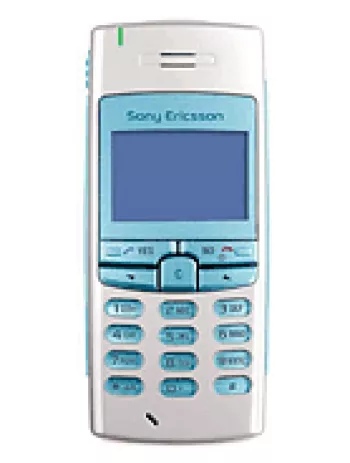Unveiling the Sony Ericsson W960 Specs Pricing Pros & Cons

Overview
The Sony Ericsson W960 is a distinctive mobile device that was announced in June 2007 and released in December of the same year. This innovative gadget was part of the brand's renowned Walkman series, designed particularly for music enthusiasts who desired more from their mobile devices. At the time, this phone represented a fusion of media and mobile technology, providing music lovers with an experience that was both convenient and advanced.
Design and Build
The design of the Sony Ericsson W960 was iconic for its time. It featured a sleek and compact body, measuring 109 x 55 x 16 mm, and weighed 119 grams, making it easy to handle and carry. The device's design was further augmented by its Vinyl Black color, which gave it an elegant appearance. The phone supported a Mini-SIM, staying in line with the typical design standards of that era.
Display
The phone came with a 2.6-inch TFT resistive touchscreen, capable of displaying 256K colors. While its screen-to-body ratio was approximately 34.9%, the resolution of 240 x 320 pixels with a 4:3 aspect ratio resulted in a pixel density of around 154 ppi. While not exceedingly sharp by today’s standards, the screen was sufficient for everyday tasks and media consumption at the time.
Hardware and Performance
Under the hood, the W960 was powered by a 32-bit Philips Nexperia PNX4008 processor clocked at 208 MHz, which, although basic compared to modern-day standards, was capable of handling the Symbian 9.1 OS with UIQ 3.0 interface comfortably. The device included 128MB of RAM, which was fairly standard in its category during its market years. Unfortunately, the phone did not support memory expansion as it lacked a card slot, but it came with an internal storage capacity of 8GB, which was a rather generous offering back in its day.
Camera Features
The Sony Ericsson W960 was equipped with a single 3.15 MP camera featuring autofocus and an LED flash, allowing users to capture decent quality images for the time. It supported video recording at 320p at 15fps. On the front, it offered a VGA camera which was utilized mainly for video calls, addressing the emerging trend of mobile video communication.
Music and Entertainment
One of the most pronounced features of the W960 was its music capability. As part of the Walkman series, it offered the best mobile music experience of its era. It supported multiple music formats and included an FM radio with RDS. Despite lacking a 3.5mm audio jack, the headset adapter included in its package allowed users to enjoy music on standard headphones. The device supported Bluetooth 2.0 with A2DP, allowing users to stream music wirelessly.
Connectivity
The W960 was quite ahead of its time in terms of connectivity options. It supported GSM/UMTS network technology, allowing use on both 2G and 3G bands, with speeds reaching up to 384 kbps. Although it lacked modern-day GPS, it was equipped with basic connectivity features like Wi-Fi 802.11b and USB 2.0, providing users with various options to connect and transfer data.
Battery Life
Powering the device was a removable Li-Po 900 mAh battery, which was common for mobile phones at the time. It provided a standby time of up to 370 hours and a talk time of up to 9 hours, which was relatively outstanding considering the phone's multimedia functionalities.
User Interface and Experience
The W960 operated on the Symbian 9.1 OS with a UIQ 3.0 interface, which provided a friendly user experience that was intuitive if not somewhat dated by today’s standards. The interface facilitated a smooth navigation experience through its comprehensive menu setup, supporting a wide range of apps available to users at the time.
Additional Features and Usability
In terms of additional features, the W960 was equipped with a WAP 2.0/xHTML browser, HTML support through Opera 8.0, and an RSS reader. These features catered to users’ needs for browsing and staying updated with news feeds, marking an evolution in mobile-device capability.
Legacy and Impact
The Sony Ericsson W960 was a notable device during its time, notably for its exceptional music capabilities and robust feature set for multimedia consumption. Despite being discontinued, it remains a memorable handset that laid the groundwork for the multimedia-centric smartphones we see today. The W960, through its innovation in integrating mobile and music technology, reinforced Sony Ericsson's position in the mobile industry as a pioneer in providing high-quality portable music experiences.
Main Features of Sony Ericsson W960
- Technology: GSM/UMTS
- Operating System: Symbian 9.1, UIQ 3.0
- Internal Memory: 8GB with 128MB RAM
- Main Camera: 3.15 MP with Autofocus and LED flash
- Display: 2.6-inch TFT resistive touchscreen, 256K colors
- Connectivity: Bluetooth 2.0 with A2DP, Wi-Fi 802.11b
- Radio: Stereo FM radio with RDS
- Battery: Removable Li-Po 900 mAh with up to 9 hours talk time
- Body Weight: 119 g (4.20 oz)
- USB: Version 2.0
Disadvantages of Sony Ericsson W960
- Lacks 3.5mm audio jack which limits headphone connectivity options.
- No memory card slot, restricting storage expansion beyond the internal 8GB.
- Outdated operating system (Symbian 9.1, UIQ 3.0), which may not support newer applications.
- Low screen-to-body ratio (~34.9%), resulting in a smaller display area.
- Resistive touchscreen, which may be less responsive compared to capacitive touchscreens.
- 3G speed limited to 384 kbps, potentially resulting in slower internet browsing and data download speeds.
- No GPS, limiting navigation capabilities.
- VGA quality on the front camera, not ideal for high-quality video calls.
- Relatively low main camera video resolution (320p@15fps).
- Discontinued status makes it difficult to find new units or receive official support.










View Also
More Phones
All Rights Reserved +13924 Phones © Mobilawy 2025
























